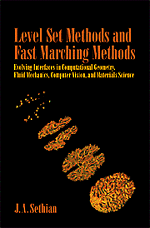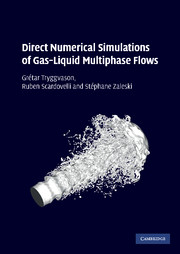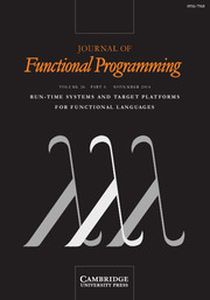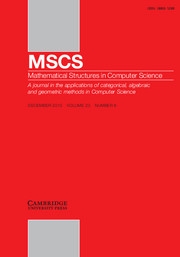Level Set Methods and Fast Marching Methods
This new edition of Professor Sethian's successful text provides an introduction to level set methods and fast marching methods, which are powerful numerical techniques for analyzing and computing interface motion in a host of settings. They rely on a fundamental shift in how one views moving boundaries; rethinking the natural geometric Lagrangian perspective and exchanging it for an Eulerian, initial value partial differential equation perspective. For this edition, the collection of applications provided in the text has been expanded, including examples from physics, chemistry, fluid mechanics, combustion, image processing, material science, fabrication of microelectronic components, computer vision, computer-aided design, and optimal control theory. This book will be a useful resource for mathematicians, applied scientists, practising engineers, computer graphic artists, and anyone interested in the evolution of boundaries and interfaces.
- An introductory text leading to sophisticated numerical schemes for front propagation
- State-of-the-art algorithms, many of which are unpublished
- Numerous examples
Product details
August 1999Paperback
9780521645577
404 pages
229 × 156 × 19 mm
0.525kg
Available
Table of Contents
- Introduction
- 1. Formulations of interface propagation
- Part I. Theory and Algorithms:
- 2. Theory of curve and surface evolution
- 3. Hamilton–Jacobi equations and associated theory
- 4. Numerical approximations: first attempt
- 5. Numerical schemes for hyperbolic conservation laws
- 6. Algorithms for the initial and boundary value formulations
- 7. Efficient schemes: adaptivity
- 8. Triangulated versions of level set and fast marching method: extensions and variations
- 9. Tests of basic methods
- Part II. Applications:
- 10. Geometry
- 11. Grid generation
- 12 Image denoising
- 13. Computer vision: shape detection and recognition
- 14. Fluid mechanics and materials sciences: adding physics
- 15. Computational geometry and computer-aided-design
- 16. First arrivals, optimizations, and control
- 17. Applications to semi-conductor manufacturing
- 18. Comments, conclusions, future directions
- References
- Index.









